-
 Bitcoin
Bitcoin $107,341.7259
0.15% -
 Ethereum
Ethereum $2,438.6204
0.70% -
 Tether USDt
Tether USDt $1.0003
-0.02% -
 XRP
XRP $2.1866
1.94% -
 BNB
BNB $649.0952
0.36% -
 Solana
Solana $150.9602
5.63% -
 USDC
USDC $0.9999
0.00% -
 TRON
TRON $0.2742
0.40% -
 Dogecoin
Dogecoin $0.1645
1.93% -
 Cardano
Cardano $0.5669
1.18% -
 Hyperliquid
Hyperliquid $37.8286
4.19% -
 Bitcoin Cash
Bitcoin Cash $491.4669
-2.74% -
 Sui
Sui $2.8150
3.06% -
 Chainlink
Chainlink $13.4184
2.91% -
 UNUS SED LEO
UNUS SED LEO $9.0809
0.27% -
 Avalanche
Avalanche $18.0295
2.60% -
 Stellar
Stellar $0.2396
1.19% -
 Toncoin
Toncoin $2.8587
0.13% -
 Shiba Inu
Shiba Inu $0.0...01160
2.59% -
 Litecoin
Litecoin $86.4192
1.45% -
 Hedera
Hedera $0.1486
1.19% -
 Monero
Monero $308.4324
0.87% -
 Polkadot
Polkadot $3.4202
1.43% -
 Bitget Token
Bitget Token $4.6436
-0.34% -
 Dai
Dai $0.9998
-0.02% -
 Ethena USDe
Ethena USDe $1.0002
0.00% -
 Uniswap
Uniswap $7.1527
3.29% -
 Pi
Pi $0.5357
-8.45% -
 Pepe
Pepe $0.0...09588
4.61% -
 Aave
Aave $259.9759
0.81%
How to manage Bybit grid trading risks? Risk control setting tips
To manage risks in Bybit grid trading, set stop-loss orders, adjust grid parameters, monitor market conditions, use take-profit orders, and diversify your portfolio.
May 10, 2025 at 08:42 am
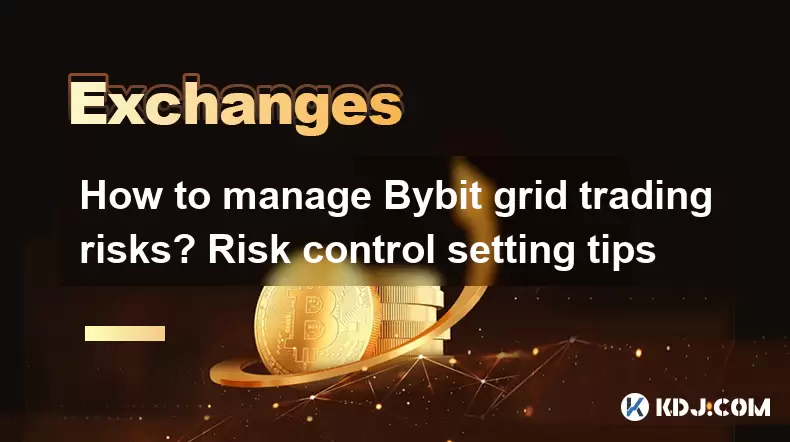
Managing risks in Bybit grid trading is crucial for any trader looking to optimize their strategy and protect their investments. Grid trading, an automated trading strategy where buy and sell orders are placed at set intervals within a specified price range, can be highly profitable but also comes with its own set of risks. This article will delve into how to effectively manage these risks and provide tips on setting up risk controls within Bybit's grid trading system.
Understanding Grid Trading on Bybit
Bybit's grid trading feature allows traders to set up a grid of buy and sell orders within a specified price range. This strategy aims to profit from market volatility by automatically buying low and selling high within the grid. While this can be an effective way to generate profits, it also exposes traders to potential risks such as significant price movements outside the grid's range, market volatility, and liquidity issues.
To start with grid trading on Bybit, follow these steps:
- Log into your Bybit account and navigate to the trading section.
- Select the 'Grid Trading' option from the menu.
- Choose the cryptocurrency pair you wish to trade.
- Set the grid parameters, including the upper and lower price bounds, the number of grids, and the investment amount.
- Review and confirm your settings before activating the grid.
Identifying Key Risks in Grid Trading
Several risks are inherent to grid trading, and understanding these is the first step towards effective risk management. Market volatility can cause prices to move rapidly outside the grid's bounds, leading to potential losses. Liquidity risk arises when there are not enough buyers or sellers to execute orders at the desired prices. Additionally, technical risks such as platform outages or connectivity issues can disrupt trading operations.
Setting Up Risk Controls in Bybit Grid Trading
Bybit offers several tools and settings to help manage these risks effectively. Here are some tips on how to set up risk controls within Bybit's grid trading system:
Set Stop-Loss Orders: One of the most crucial risk management tools is the stop-loss order. This allows you to set a price at which your grid trading will automatically stop if the market moves unfavorably. To set a stop-loss order, go to the grid trading settings and enter the desired stop-loss price.
Adjust Grid Parameters: Carefully consider the grid's upper and lower bounds. Setting these too wide can expose you to significant losses if the market moves outside the range, while setting them too narrow may limit potential profits. Experiment with different grid sizes to find a balance that suits your risk tolerance.
Monitor Market Conditions: Regularly check market conditions and adjust your grid trading strategy accordingly. Stay informed about major news events that could impact cryptocurrency prices, and be prepared to adjust your grid settings or pause trading if necessary.
Use Take-Profit Orders: Similar to stop-loss orders, take-profit orders can help you secure profits automatically. Set a take-profit level at which your grid trading will stop, allowing you to lock in gains before the market reverses.
Diversify Your Portfolio: Don't put all your funds into a single grid trading strategy. Spread your investments across different cryptocurrency pairs and trading strategies to mitigate risk.
Implementing a Risk Management Plan
A comprehensive risk management plan is essential for successful grid trading on Bybit. Here are steps to develop and implement such a plan:
Assess Your Risk Tolerance: Determine how much risk you are willing to take. This will influence your grid settings, such as the size of the grid and the amount of capital you allocate to grid trading.
Define Clear Goals: Set specific financial goals for your grid trading activities. Whether it's a target profit or a maximum acceptable loss, having clear goals will help guide your risk management decisions.
Regularly Review and Adjust: Continuously monitor your grid trading performance and adjust your strategy as needed. Regularly review your grid settings, stop-loss and take-profit levels, and overall market conditions to ensure your risk management plan remains effective.
Keep Records: Maintain detailed records of your grid trading activities, including trades, profits, and losses. This will help you identify patterns and make informed decisions about future adjustments to your strategy.
Utilizing Bybit's Advanced Features
Bybit offers several advanced features that can enhance your grid trading risk management. Leverage can amplify both gains and losses, so use it cautiously. Bybit's risk limit feature allows you to set a maximum amount of risk you're willing to take on any given trade, which can help prevent significant losses.
To utilize these features effectively:
Understand Leverage: Before using leverage in grid trading, ensure you understand how it works and the potential risks involved. Start with low leverage and gradually increase it as you gain more experience.
Set Risk Limits: Go to the risk management section in Bybit's settings and set a risk limit that aligns with your risk tolerance. This will help protect your account from excessive losses.
Use Bybit's Analytics Tools: Bybit provides various analytics tools to help you monitor market trends and your trading performance. Use these tools to make data-driven decisions about your grid trading strategy.
Frequently Asked Questions
Q: Can I use grid trading on Bybit with any cryptocurrency pair?
A: Bybit supports grid trading on a variety of cryptocurrency pairs, but not all pairs may be available for this feature. Check Bybit's trading section to see which pairs are currently supported for grid trading.
Q: How often should I adjust my grid trading settings?
A: The frequency of adjusting grid trading settings depends on market conditions and your risk management strategy. It's advisable to review your settings at least weekly, or more frequently if there are significant market changes.
Q: Is it possible to run multiple grid trading strategies simultaneously on Bybit?
A: Yes, Bybit allows you to set up and run multiple grid trading strategies at the same time. This can help diversify your trading and manage risk across different cryptocurrency pairs and grid settings.
Q: What happens if Bybit experiences a technical issue while my grid trading is active?
A: In the event of a technical issue, Bybit's system is designed to pause trading to prevent unintended trades. Once the issue is resolved, trading will resume according to your set parameters. Always ensure you have stop-loss orders in place to mitigate potential risks during such events.
Disclaimer:info@kdj.com
The information provided is not trading advice. kdj.com does not assume any responsibility for any investments made based on the information provided in this article. Cryptocurrencies are highly volatile and it is highly recommended that you invest with caution after thorough research!
If you believe that the content used on this website infringes your copyright, please contact us immediately (info@kdj.com) and we will delete it promptly.
- AI Token Taking Over: Why Smart Investors are Eyeing Audited Crypto Ruvi AI
- 2025-06-29 04:30:12
- Ethereum, AI Tokens, and Growth: Is Ruvi AI the Next Big Thing?
- 2025-06-29 04:30:12
- Hedera Price: Decoding Technical Signals and Upside Potential
- 2025-06-29 04:50:13
- Altcoin Rally on the Horizon? Decoding the Potential Boom
- 2025-06-29 04:35:12
- On-Chain Data Deep Dive: Altcoin Growth & Transaction Volume Insights
- 2025-06-29 05:30:13
- Cryptos, Real Growth, 2025: Navigating the Landscape
- 2025-06-29 05:30:13
Related knowledge
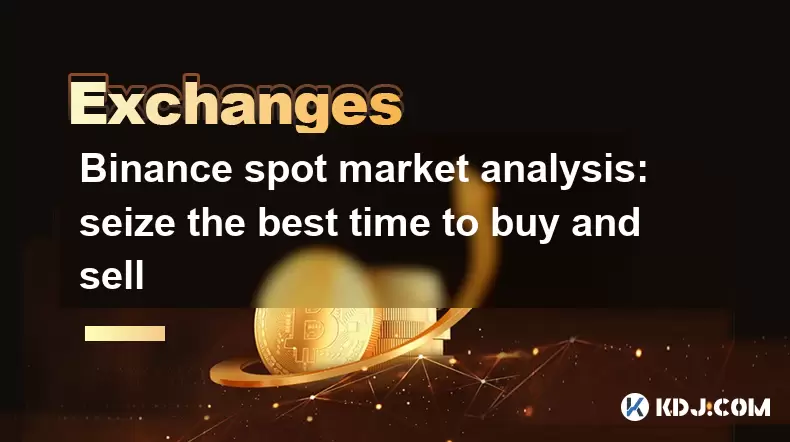
Binance spot market analysis: seize the best time to buy and sell
Jun 19,2025 at 04:56pm
Understanding the Binance Spot MarketThe Binance spot market is one of the most popular platforms for cryptocurrency trading globally. It allows users to trade digital assets at current market prices, making it essential for traders aiming to buy low and sell high. Unlike futures or margin trading, spot trading involves direct ownership of the asset aft...
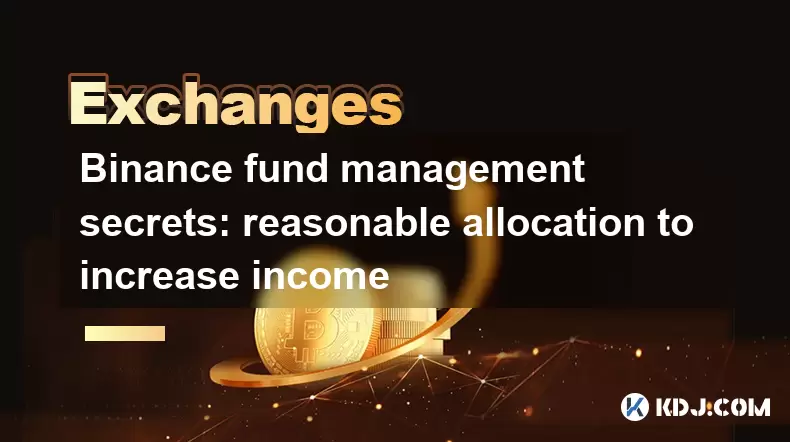
Binance fund management secrets: reasonable allocation to increase income
Jun 22,2025 at 02:29pm
Understanding Binance Fund ManagementBinance fund management involves strategic allocation of your cryptocurrency assets to optimize returns while managing risk. The key to successful fund management lies in understanding how different investment options on the Binance platform can be utilized to create a diversified portfolio. This includes spot tradin...
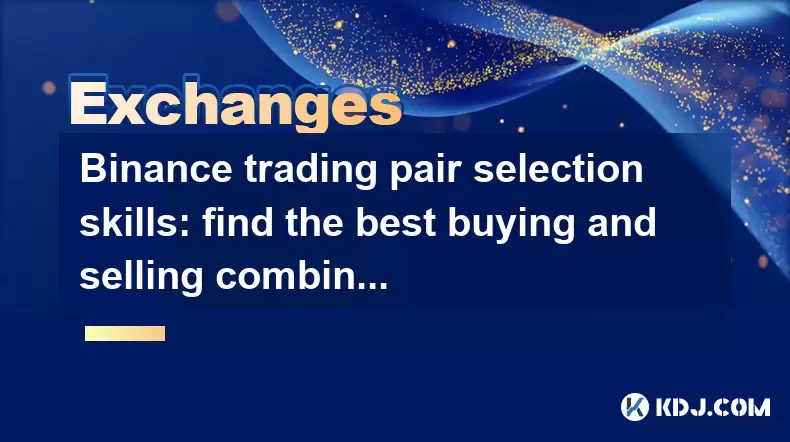
Binance trading pair selection skills: find the best buying and selling combination
Jun 23,2025 at 02:49am
Understanding the Basics of Trading Pairs on BinanceBefore diving into trading pair selection skills, it's essential to understand what a trading pair is. On Binance, a trading pair refers to two cryptocurrencies that can be traded against each other. For example, BTC/USDT means Bitcoin is being traded against Tether. Each trading pair has its own liqui...
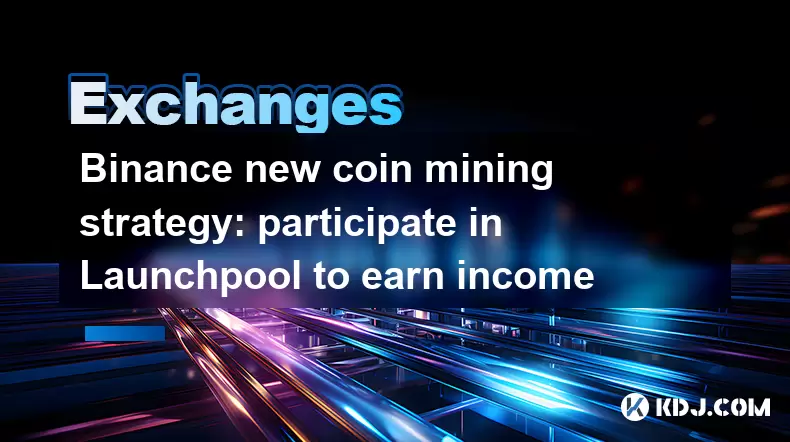
Binance new coin mining strategy: participate in Launchpool to earn income
Jun 23,2025 at 11:56am
What is Binance Launchpool and how does it work?Binance Launchpool is a feature introduced by the world’s largest cryptocurrency exchange, Binance, to allow users to earn new tokens through staking. This platform enables users to stake their existing cryptocurrencies (such as BNB, BUSD, or other supported assets) in exchange for newly launched tokens. T...
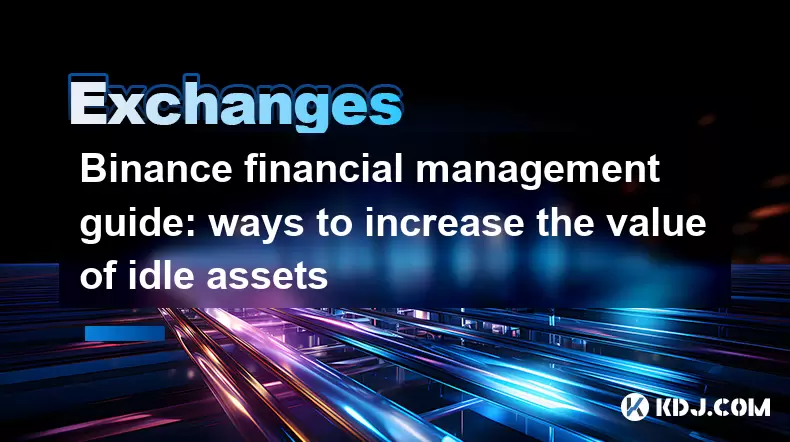
Binance financial management guide: ways to increase the value of idle assets
Jun 19,2025 at 11:22pm
Understanding Idle Assets in the Cryptocurrency SpaceIn the fast-paced world of cryptocurrency, idle assets refer to digital currencies that are not actively being used for trading, staking, or yield farming. Holding these funds in a wallet without utilizing them means missing out on potential growth opportunities. Binance, as one of the leading platfor...
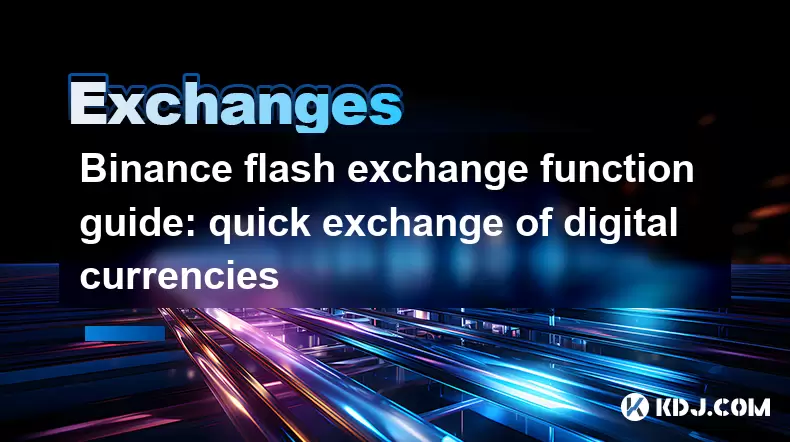
Binance flash exchange function guide: quick exchange of digital currencies
Jun 23,2025 at 12:29pm
What is the Binance Flash Exchange Function?The Binance Flash Exchange function is a powerful tool designed to allow users to instantly swap between supported cryptocurrencies without the need for placing traditional buy/sell orders. This feature simplifies the trading process by offering a direct exchange mechanism, eliminating the requirement to conve...

Binance spot market analysis: seize the best time to buy and sell
Jun 19,2025 at 04:56pm
Understanding the Binance Spot MarketThe Binance spot market is one of the most popular platforms for cryptocurrency trading globally. It allows users to trade digital assets at current market prices, making it essential for traders aiming to buy low and sell high. Unlike futures or margin trading, spot trading involves direct ownership of the asset aft...

Binance fund management secrets: reasonable allocation to increase income
Jun 22,2025 at 02:29pm
Understanding Binance Fund ManagementBinance fund management involves strategic allocation of your cryptocurrency assets to optimize returns while managing risk. The key to successful fund management lies in understanding how different investment options on the Binance platform can be utilized to create a diversified portfolio. This includes spot tradin...

Binance trading pair selection skills: find the best buying and selling combination
Jun 23,2025 at 02:49am
Understanding the Basics of Trading Pairs on BinanceBefore diving into trading pair selection skills, it's essential to understand what a trading pair is. On Binance, a trading pair refers to two cryptocurrencies that can be traded against each other. For example, BTC/USDT means Bitcoin is being traded against Tether. Each trading pair has its own liqui...

Binance new coin mining strategy: participate in Launchpool to earn income
Jun 23,2025 at 11:56am
What is Binance Launchpool and how does it work?Binance Launchpool is a feature introduced by the world’s largest cryptocurrency exchange, Binance, to allow users to earn new tokens through staking. This platform enables users to stake their existing cryptocurrencies (such as BNB, BUSD, or other supported assets) in exchange for newly launched tokens. T...

Binance financial management guide: ways to increase the value of idle assets
Jun 19,2025 at 11:22pm
Understanding Idle Assets in the Cryptocurrency SpaceIn the fast-paced world of cryptocurrency, idle assets refer to digital currencies that are not actively being used for trading, staking, or yield farming. Holding these funds in a wallet without utilizing them means missing out on potential growth opportunities. Binance, as one of the leading platfor...

Binance flash exchange function guide: quick exchange of digital currencies
Jun 23,2025 at 12:29pm
What is the Binance Flash Exchange Function?The Binance Flash Exchange function is a powerful tool designed to allow users to instantly swap between supported cryptocurrencies without the need for placing traditional buy/sell orders. This feature simplifies the trading process by offering a direct exchange mechanism, eliminating the requirement to conve...
See all articles

























































































